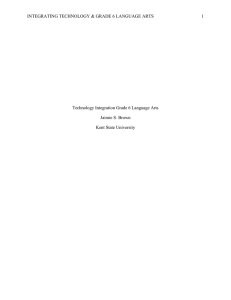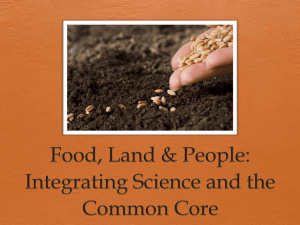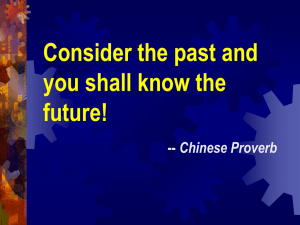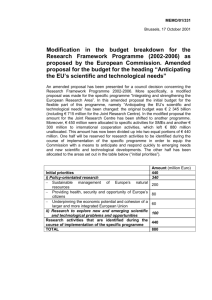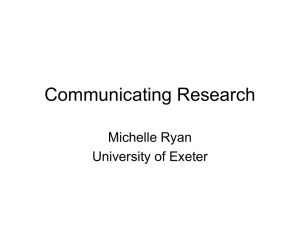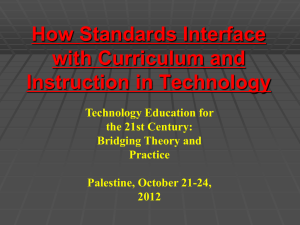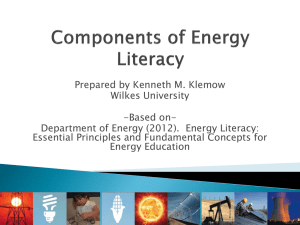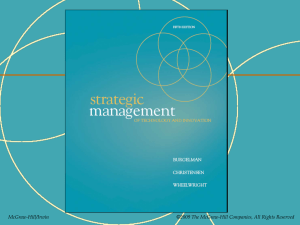Frazier - International Technology and Engineering Educators
advertisement
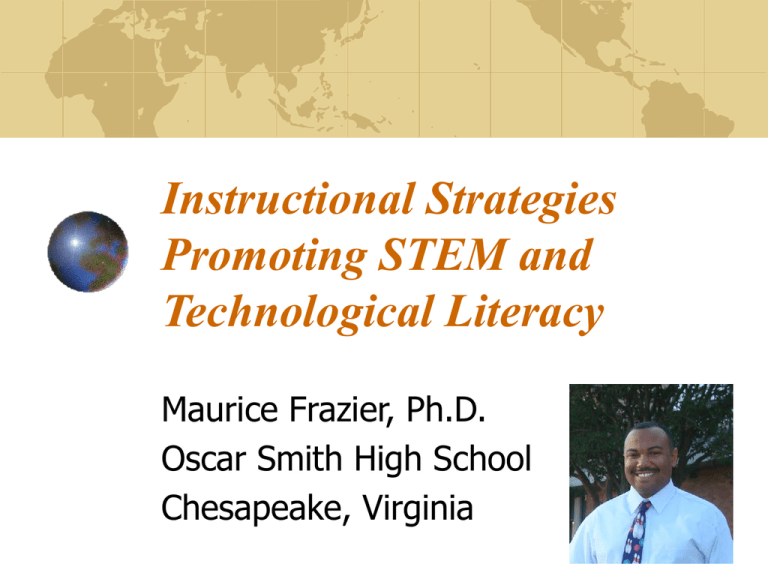
Instructional Strategies Promoting STEM and Technological Literacy Maurice Frazier, Ph.D. Oscar Smith High School Chesapeake, Virginia Have you Ever had a Conversation Start like this… Person 1: “So what do you teach?” Person 2: “Technology Education” Person 1: “Hmmm what is that? Computers? Shop?” Can the average secondary technology education teacher sufficiently explain what they teach and why? The Nature of Secondary Technology Education Support the Core Subjects Mathematics, Science, Social Studies, and English/Language Arts Promote technological literacy and reinforce STEM curriculum. It is Important to Know the Difference… Technology Education versus Educational Technology Technology education teachers, core subject teachers, and administrators need to understand the difference. Technology education is intended to foster technological literacy and educational technology supports the implementation of technology education. The Importance of STEM and Technological Literacy Why is it important for us as educators to integrate the core subjects into technology education courses? Research tells us it can be helpful in boosting student’s performance on standards assessments. Students can relate the material to “Real World” applications National technological literacy assessments are on the horizon. A Study Worth Noting… Technology education completers (courses taken in sequence) scored significantly higher on their standardized assessments in three out of four core subjects than noncompleters. Study Results Mathematics: Completers- 466.9 Non-Completers- 441.7 (25 points higher) Social Studies: Completers- 502 Non-Completers- 463.8 (38 points higher) Study Results (cont.) English/Language Arts: Completers- 474.7 Non-Completers- 464.6 (10 points higher) Science: Completers- 459.7 Non-Completers- 430.8 (29 points higher) Curriculum Integration Ideas and Suggestions It is important to actively integrate material from the core subjects as much as possible. Collaborating and sharing ideas with other instructors that teach similar subjects is one of the best ways to start. Integrating English/Language Arts Speed Writing One to two minute daily writing sessions where students write about what they know and what they have learned about a new topic. • Current communication devices and modes of communicating • Impacts that communication devices are having on our daily lives Integrating English/Language Arts (cont.) Active Notes and Paraphrasing Students take notes and then work with a partner to paraphrase and dictate examples of what they have learned by adding their thoughts to their partner’s notes. Students then read what their partner has written to the rest of the class. Integrating English/Language Arts (cont.) Word Discovery Students must look up a word that relates to the current material that they are not familiar with. The student must record the definition, cite examples of how to use it properly, and teach a three minute lesson to another student about how it relates to what they are learning. Integrating Mathematics Measurement Scavenger Hunt Students walk around school and outside to find and measure objects that are in a given range of measurements that have been designated by the instructor. • With that activity students integrate estimation, decimals, fractions, and ratios. Integrating Mathematics (cont.) Real World Word Problems Students develop a word problem for one of their class mates to solve based on the material that they are learning. The student must explain how that math that they used to solve the problem could also be applied in a job or career that relates to that subject they are studying. Integrating Science Environmental Impacts Students can use various forms of science to study the global impacts of technology on the natural environment. • Impacts on the atmosphere and natural resources (Earth Science) • Agricultural technology, pesticides, and fertilizers (Chemistry) Integrating Social Studies Social Impacts of New Technology Students can explore the various ways that new technology has changed local and global social interactions over time. • New communication technology • New construction and production methods • New digital imaging and video technology Integrating Social Studies (cont.) Understanding Ethics and Responsibility Students explore ethical awareness and how it might have an impact on other people and the world around them. • Ethics and the medical field • Ethics and environmental practices • Ethics and public privacy How do we Know we are on the Right track? How do technology education teachers know that they are supporting core standards? Is there a way for technology education teachers to know that they are supporting a STEM curriculum and promoting technological literacy? Suggestions for Articulating Curriculum and Standards Technology education and core subject teachers need to collaborate. Neither group seems to know exactly what the other group is teaching. Align instruction Develop activities Reinforce standards Suggestions for Articulating Curriculum and Standards (cont.) Workshops to stay abreast of current trends relating to technological literacy and educational strategies. New Technological Literacy Standards (NAEP Testing) Trends in Mathematics, Science, and Engineering standards New instructional strategies and delivery methods Discussion, Questions, and Idea Sharing What are some of the ways that you are integrating core subjects into your technology education curriculum? What are some ways that we can change the perception of technology education? Are technological literacy standards a good idea? Final Comments and Remarks Thank you for you time and attention. Maurice Frazier Oscar Smith High School Chesapeake, Virginia Mfraz004@odu.edu
